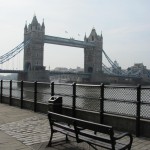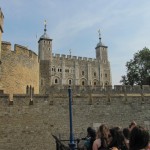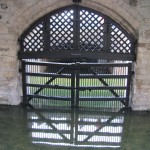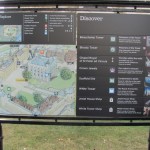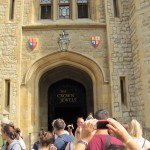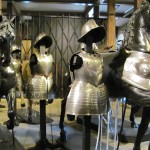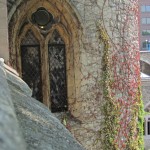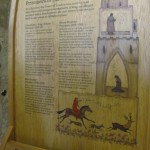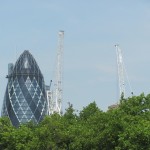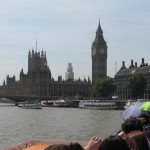The London Whirlwind: Day Three
Our third day in London began with a visit to the Tower of London. To be perfectly honest, I (as I would expect others to as well) thought the Tower of London was just that, a tower. Well, for those who do not already know, it is not just a tower. In fact, it is a medieval complex of buildings that has seen royalty, prisoners, and tourists walk through its gates for hundreds of years. The Tower of London, though, does have a “Bloody Tower” which is infamous for the medieval torturing of prisoners with contraptions like the Rack and another which I would call the Compressor. It is also the home of the Crown Jewels, an amazing array of royal jewels, crowns, and their accompaniments which is not to be missed. I can still not fathom that some of those jewels, like the 530 carat Cullinan I diamond in the royal scepter, truly exist! Besides their beauty, the fact that many of these articles have been around since the 1600s is equally impressive.
In its day, the Tower of London also featured a menagerie of exotic animals like a polar bear, an elephant, and baboons. (Apparently, this feature was closed after several “unfortunate accidents.”). The Tower is seems an unlikely place for amusement, but actually it nearly invented the idea of visitor attractions. The Line of Kings exhibit of armor, life-sized wooden horses, and armory memorabilia is the longest running visitor attraction in the world. Famous foreign monarchs and even the American poet Phyllis Wheatley have walked through its displays. Other interesting features speak about the mint which once operated at the premise, a raven aviary, and ancient weaponry which has been exchanged through various diplomatic journeys over the centuries.
After leaving the Tower of London, we took a short walk to a dock on the Thames for a river cruise to see all the scenic areas, famous architecture, and iconic buildings and bridges London has to offer. The short trip was a wonderful opportunity for photos of the London Bridge, Waterloo Bridge (aka, the Women’s Bridge since it was built in WWII by a largely female workforce), the Globe Theater, and modern buildings which Londoners have given creative nicknames like the Shard and the Gerkin.
Once off the boat, we ate lunch in Parliament Square across from Big Ben and then headed towards the British Museum. This museum is an overwhelming massive collection of all the colonial memorabilia of British history, contemporary exhibits, Enlightenment fetishes, and salvaged architecture. Although it would be impossible to visit all the exhibits in one afternoon, Veronica and I made a valiant effort and visited the Greek and Roman sections, Egypt and the ancient Middle East, The Enlightenment, and Polynesia. Honestly, if you cannot make it to Greece, your next best bet is the Greek wing at the British Museum. Salvaged pieces from nearly every iconic Greek structure can be found here and complete facades of buildings are reconstructing within the museum for viewing.
The Polynesia section featured an interesting textile art display composed of medication. The hundred foot long piece was meant to represent the amount of medication taken by one married couple throughout the course of their lifetime and acted as a sort of medical diary of their lives. Some sections showed their effort to take vitamins or fight off allergies while others showed the effects of a battle with cancer. As a public health major, I found the idea of it quite interesting, and understand the power of seeing all those medications laid out before you at once. It makes you question how much of that prescription use may have been prevented with simple lifestyle changes.
Our final full day in London came to a close with dinner at the Strand Palace. The next morning, we were up early and put back on coaches towards Exeter.
- The Tower Bridge
- Outside the Tower of London
- Traitor’s Gate at the Tower: used for prisoners, like Ann Boleyn who was executed here
- The Tower Complex
- Waiting to see the Crown Jewels (no pictures allowed inside)
- The Line of Kings
- Tower Window
- Prisoners of the Tower
- The Gerkin
- River Thames View







